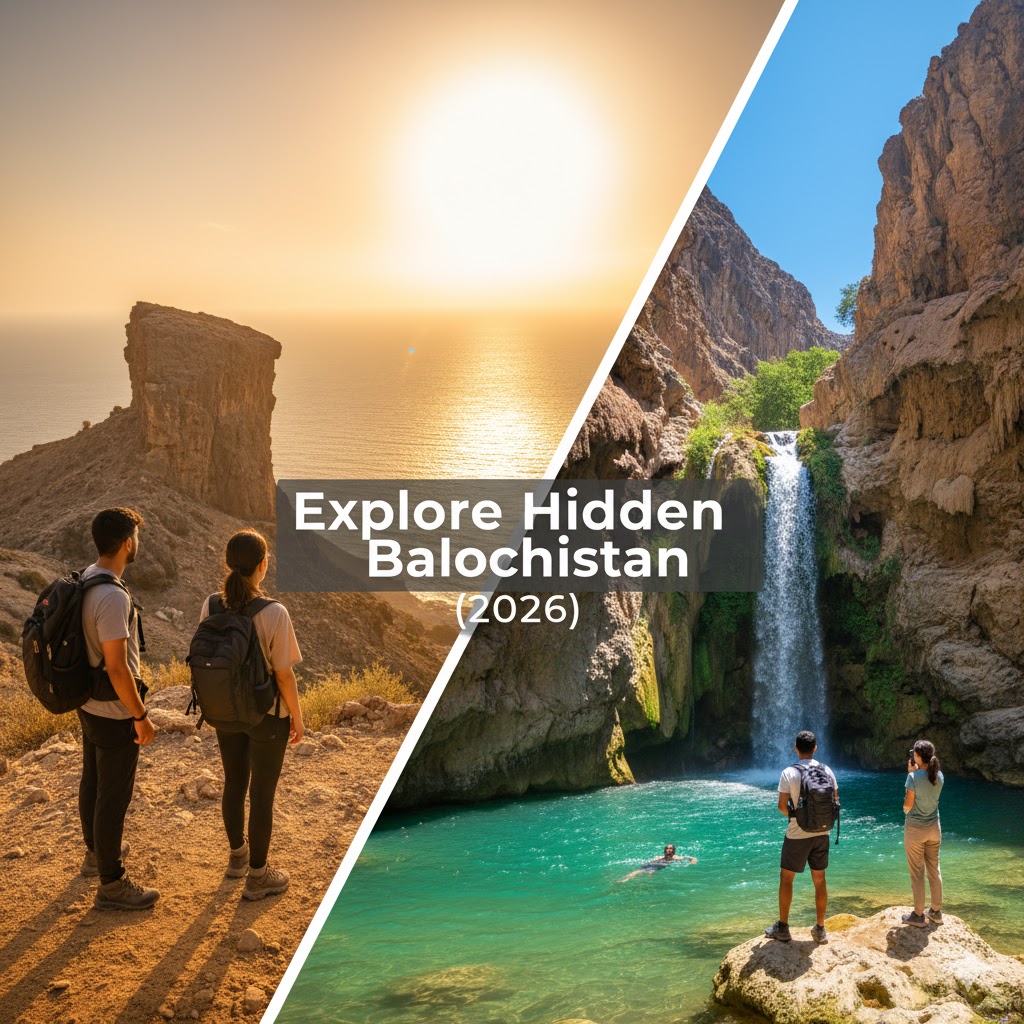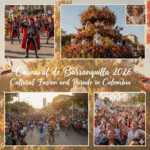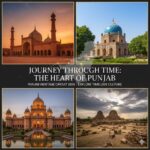Introduction — Discover Balochistan’s Untamed Beauty
Balochistan Travel Guide 2026 invites adventurers to explore Pakistan’s most enigmatic and untouched region. From the moon-like landscapes of Hingol National Park to the turquoise waters of Ormara and Kund Malir Beach, this province reveals a raw, cinematic charm unlike any other in South Asia.
Balochistan, stretching from Iran’s borders to the Arabian Sea, is where ancient history, desert silence, and tribal traditions merge. In 2026, improved infrastructure, eco-tourism camps, and cultural trails are making the region more accessible — yet it retains its authentic wildness.
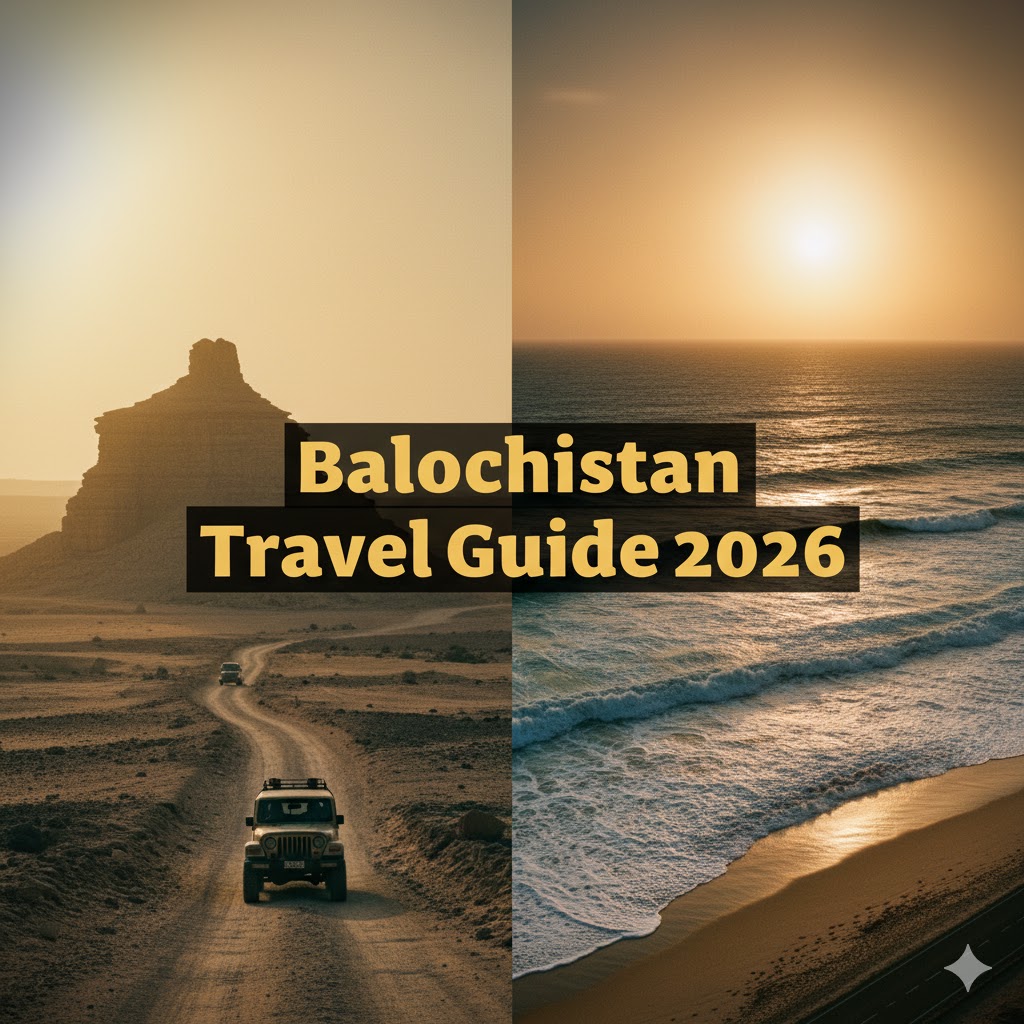
🏞️ Top Natural Wonders in Balochistan
🏜️ Hingol National Park
Pakistan’s largest national park, Hingol, features surreal rock formations like the Princess of Hope, active mud volcanoes, and roaming ibex herds. The Hinglaj Mata Temple within the park welcomes Hindu pilgrims annually, showcasing the region’s spiritual diversity.
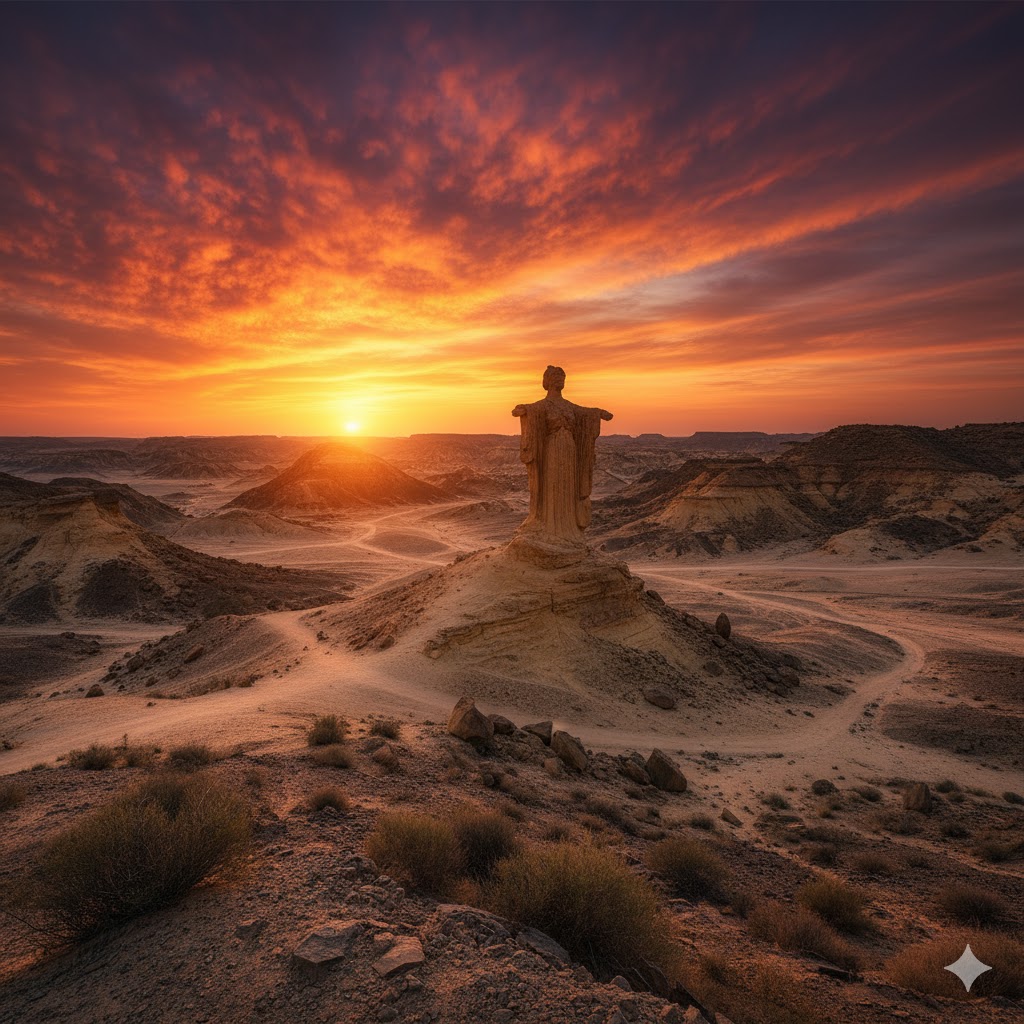
Must Read more: about natural heritage in Explore Mughal Architecture in Sindh (2026).
Source: Official tourism info via Pakistan Tourism Development Corporation.
🏖️ Makran Coastal Highway & Beaches
The Makran Coastal Highway connects Karachi to Gwadar, offering one of the world’s most scenic drives. Stop at Kund Malir Beach, Ormara Bay, and Buzi Pass — each a blend of desert and sea.
Small fishing villages welcome travelers with simple seafood dishes — grilled fish, lobsters, and traditional Sajji cooked over open coals.
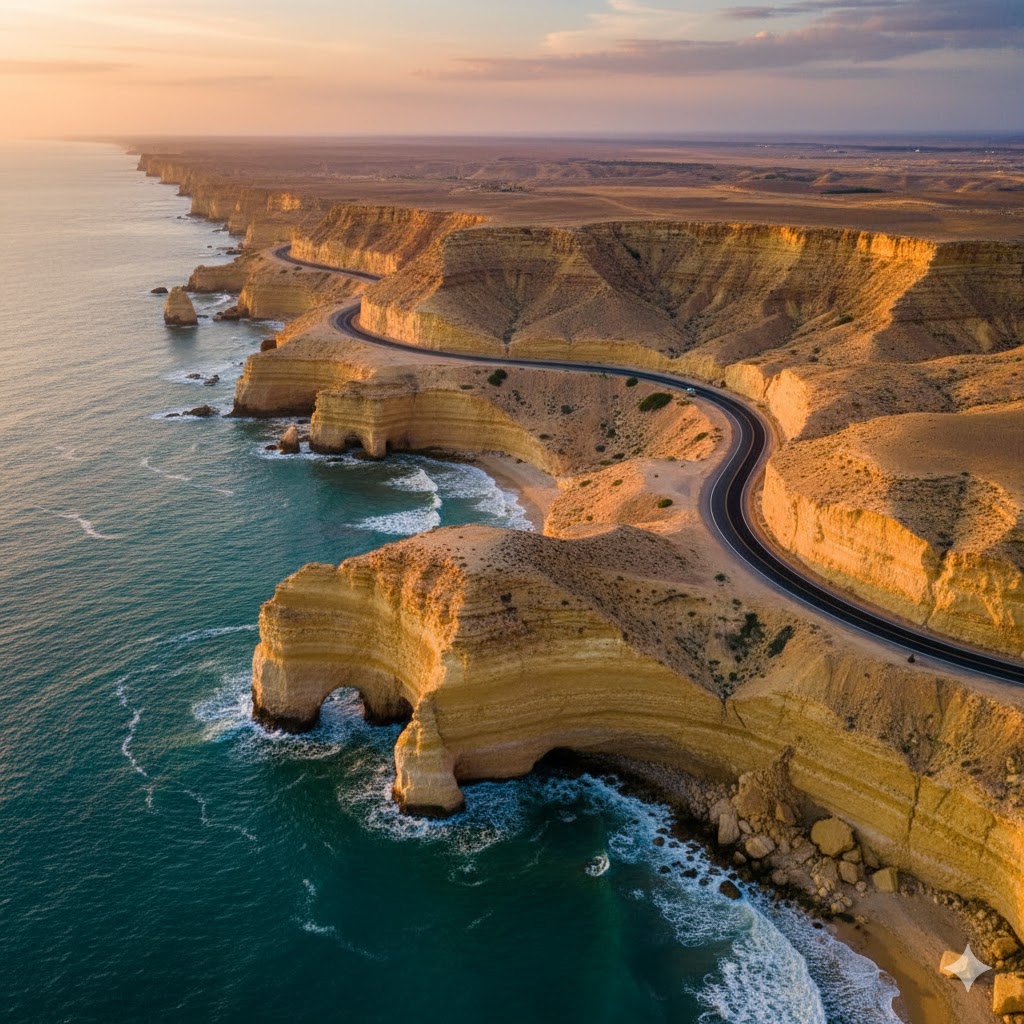
Source: Learn more from Visit Pakistan Official Portal.
⛰️ Hingol Mud Volcanoes & Buzi Pass
Near Kund Malir, the Chandragup Mud Volcanoes are both geological and religious landmarks. Locals make pilgrimages here before visiting Hinglaj Mata Temple. The Buzi Pass viewpoint offers panoramic shots of the coastal cliffs and desert ridges.
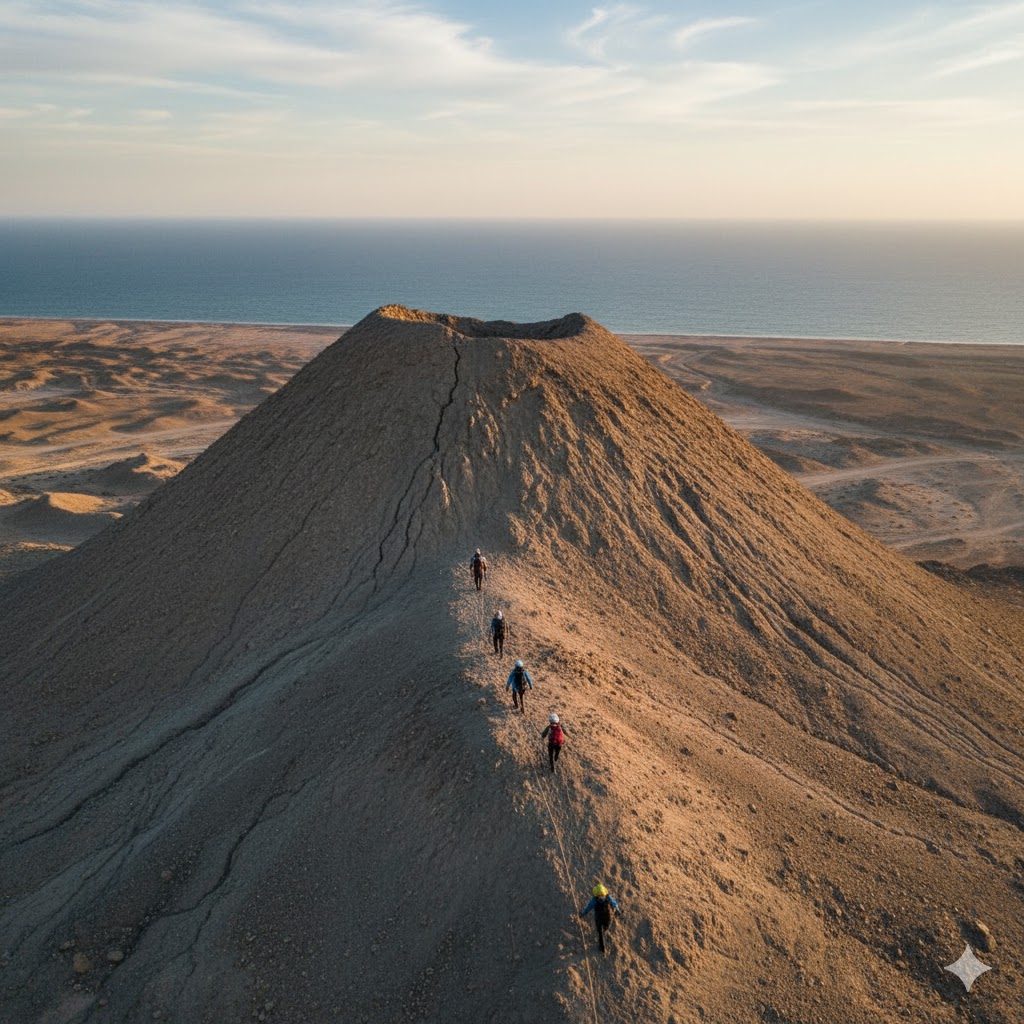
🏰 Historical & Cultural Landmarks
🕌 Mehrgarh — The Dawn of Civilization
Located near Bolan Pass, Mehrgarh (7000 BCE) is one of the earliest known settlements. Archaeologists call it “the seed of the Indus Valley Civilization.” Visit the Quetta Archaeological Museum to see figurines, beads, and tools unearthed here.
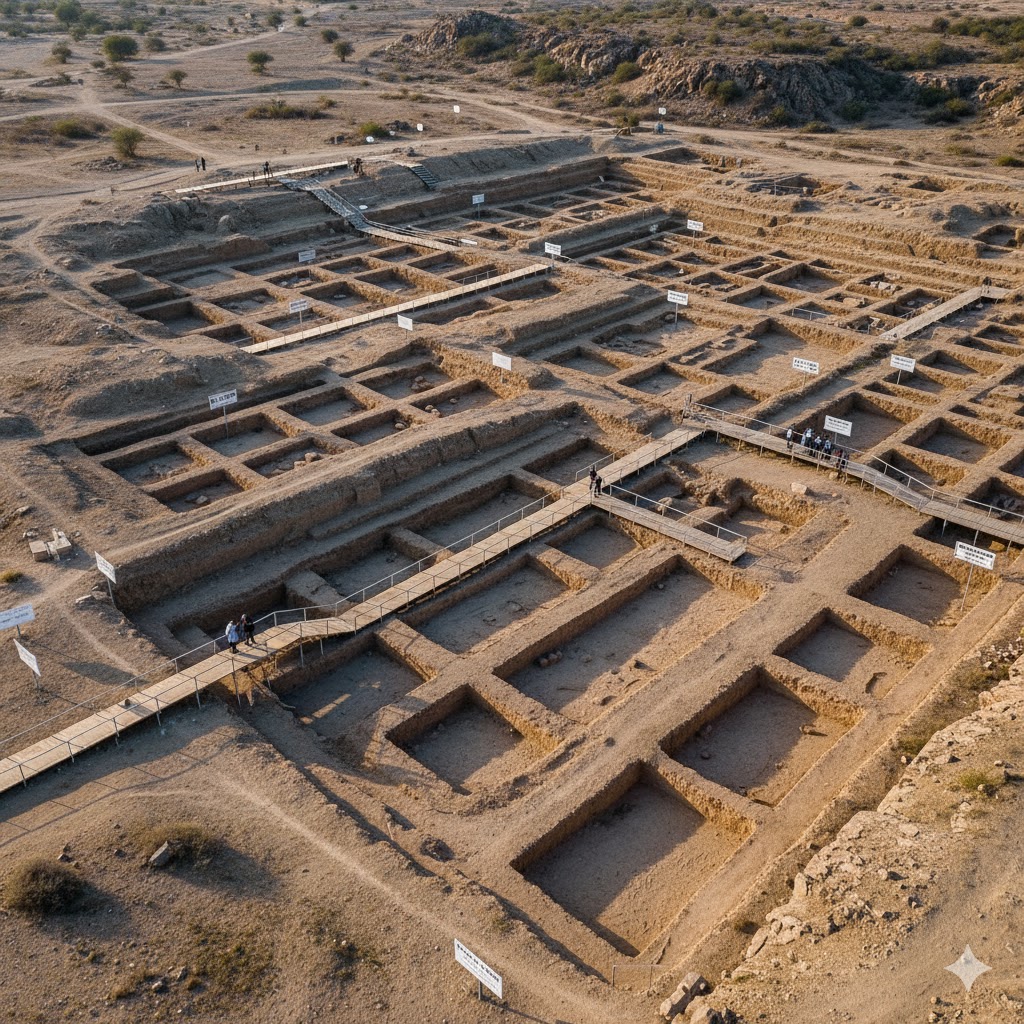
Read More: Follow the full heritage route in Discover Pakistan’s Ancient Civilizations Trail (2026).
Source: UNESCO archive on Mehrgarh Heritage Site.
🏯 Kalat Fort — The Seat of Baloch Kings
Perched atop rugged cliffs, Kalat Fort reflects Balochistan’s medieval strength and artistry. Once home to the Khanate of Kalat, its architectural blend of Islamic and Persian motifs tells stories of alliances and resistance.
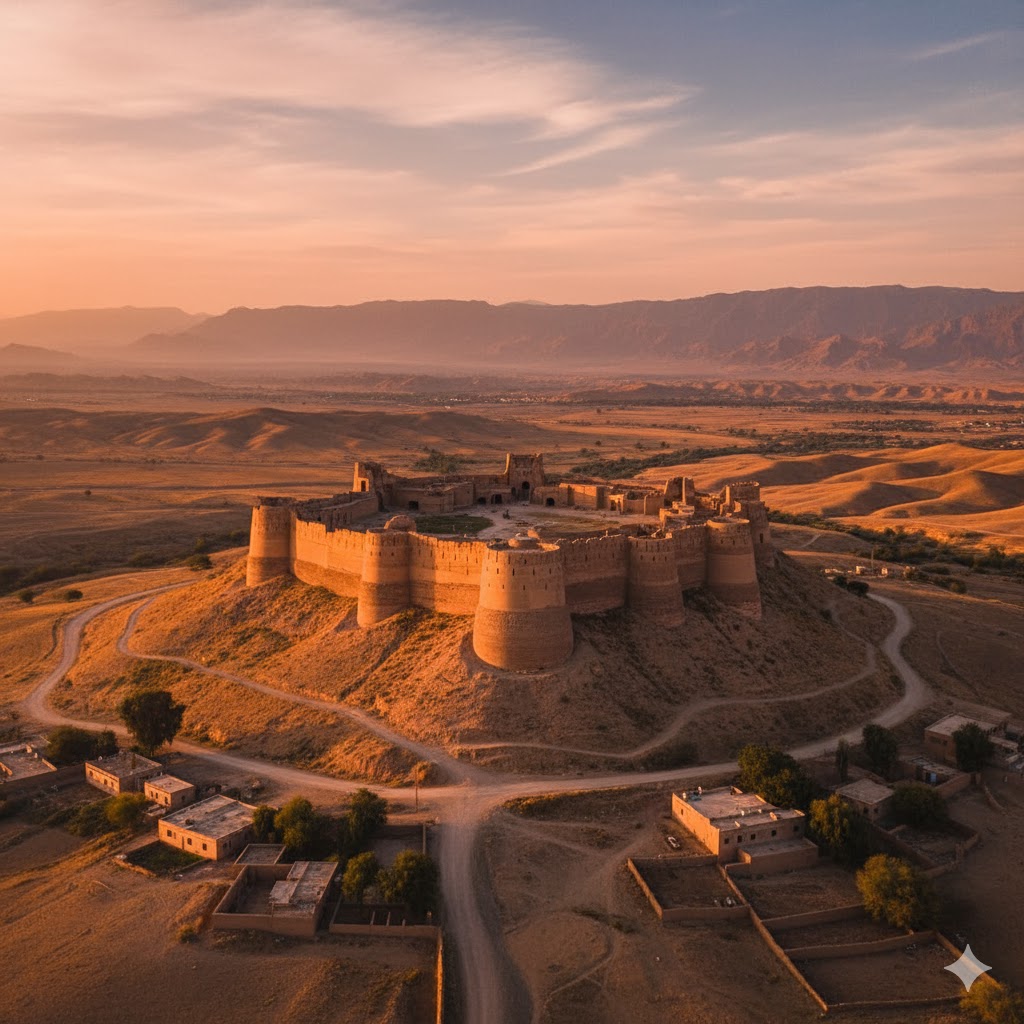
🕌 Ziarat Residency — A National Symbol
Quaid-e-Azam Muhammad Ali Jinnah’s Residency in Ziarat is a serene wooden structure surrounded by pine forests. Restored after the 2013 fire, it now serves as a heritage museum narrating Pakistan’s independence journey.
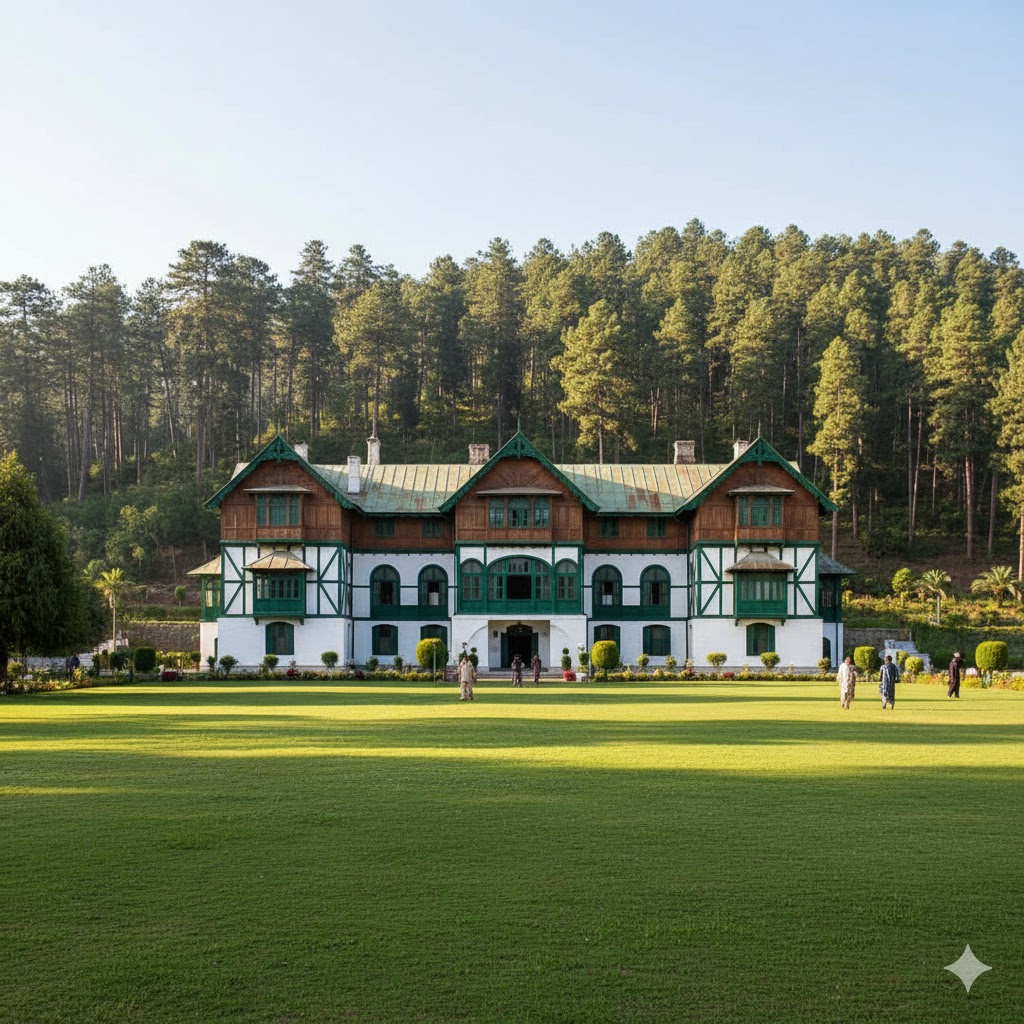
🌵 Adventure & Eco-Tourism
🏕️ Ziarat Valley & Juniper Forests
Home to world’s second-largest juniper forest, Ziarat offers peaceful treks and eco-lodges. The scent of pine, crisp mountain air, and silence create a meditative retreat away from city life.
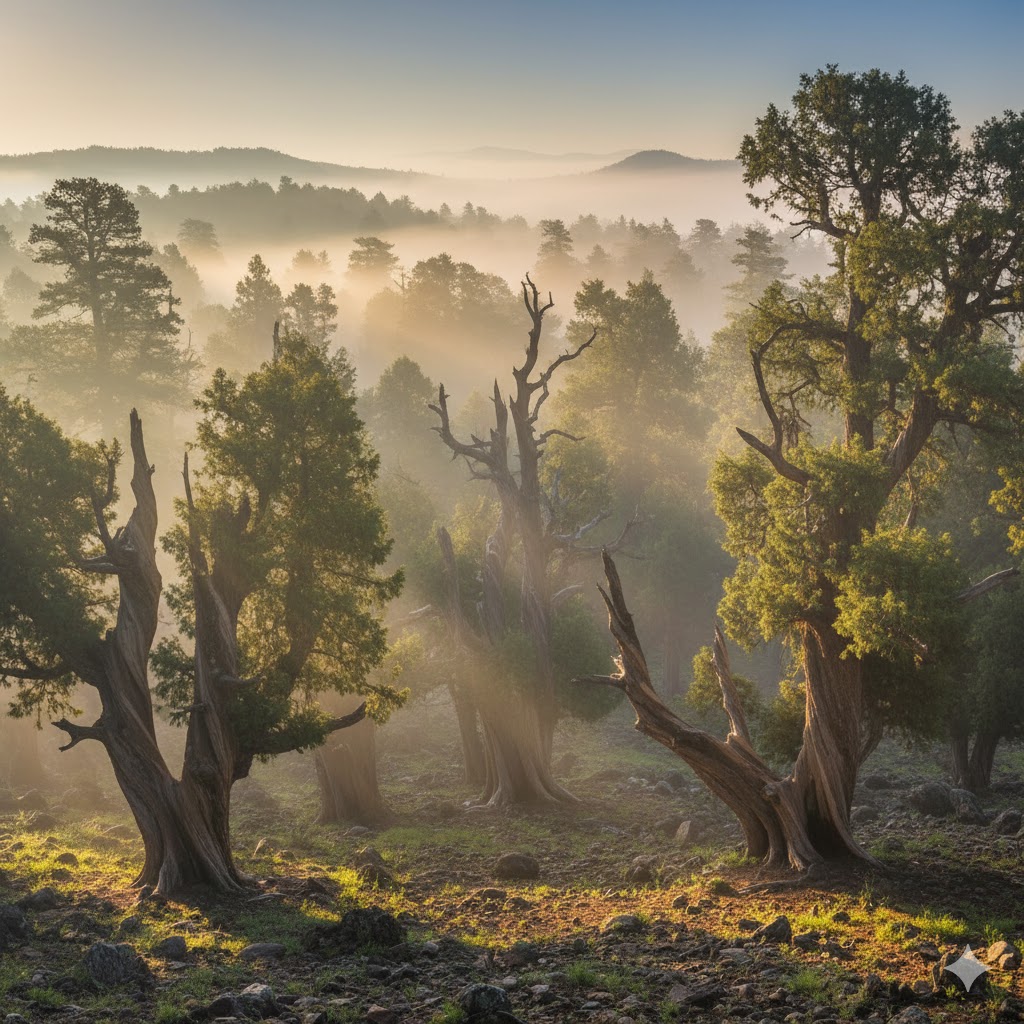
🚙 Jeep Safari to Moola Chotok
Hidden deep in Khuzdar District, Moola Chotok Canyon is a secret paradise of waterfalls, turquoise pools, and towering cliffs. 4×4 jeeps are required; local guides can arrange day trips or camping.
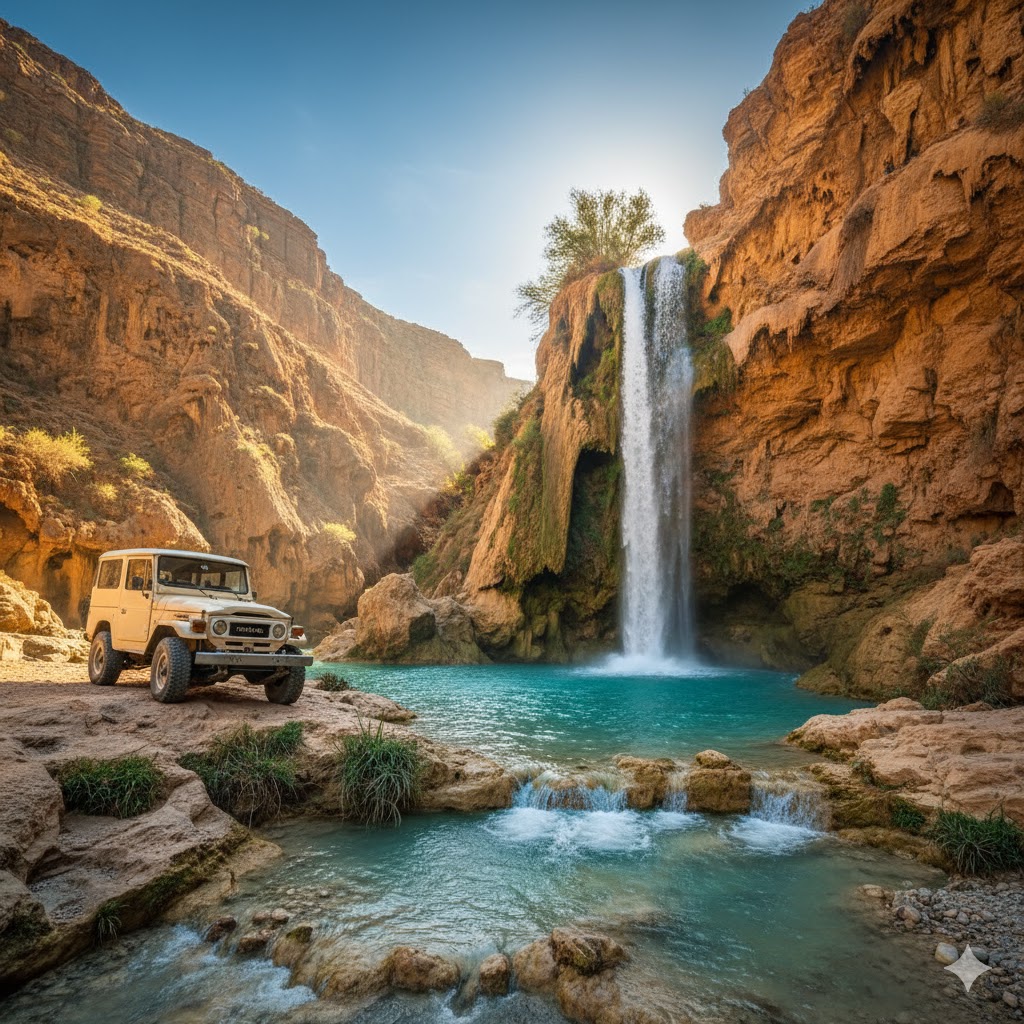
Read More: Check scenic spots nearby in Karachi Heritage Architecture Guide (2026).
🏄♂️ Gwadar — The Rising Coastal Gem
Gwadar, once a sleepy fishing port, is now Pakistan’s premier coastal city with luxury resorts and new marinas. Visit the Hammerhead Peninsula and Gwadar Sunset Point for breathtaking views.
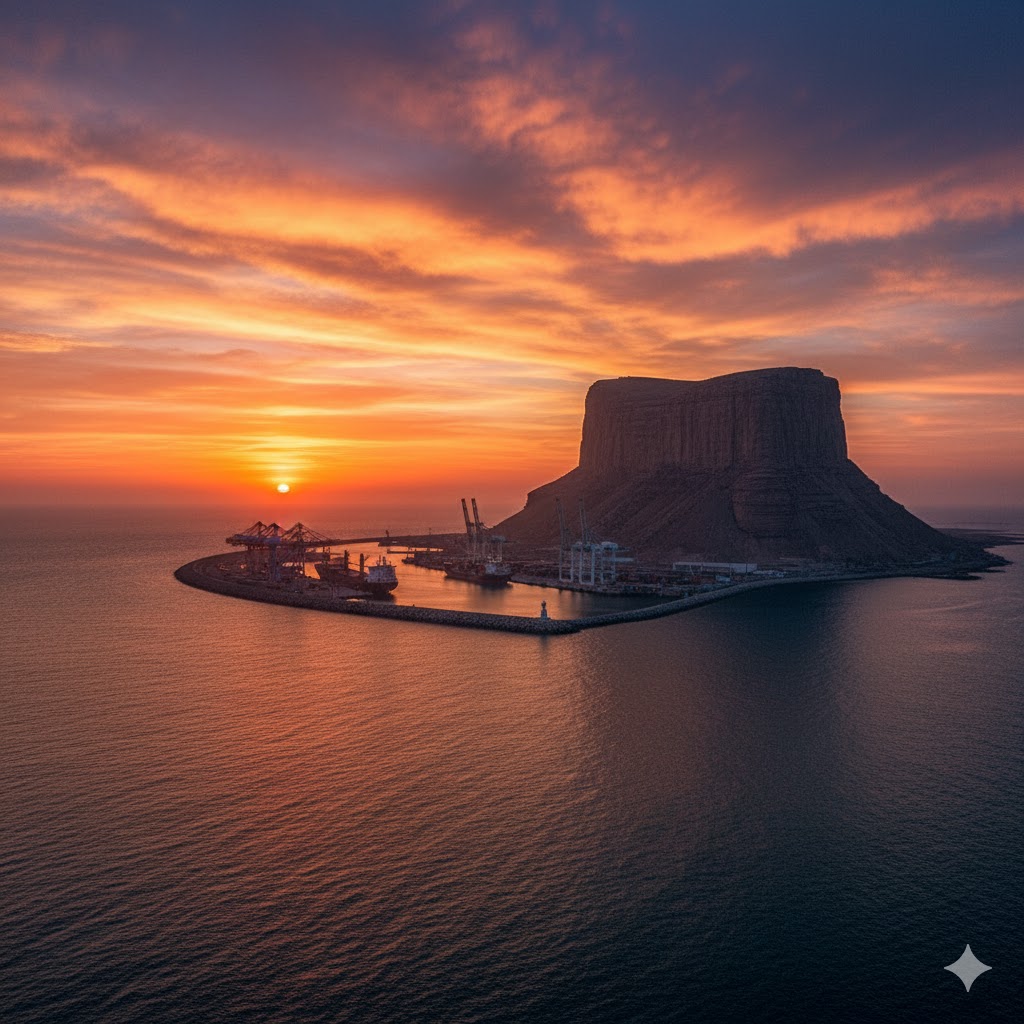
Source: Learn more about development updates via Gwadar Development Authority.
🧭 Suggested 7-Day Balochistan Itinerary (2026)
| Day | Destination | Highlights |
|---|---|---|
| Day 1 | Karachi → Kund Malir | Coastal drive, beach camping |
| Day 2 | Hingol National Park | Mud volcanoes, Princess of Hope |
| Day 3 | Ormara → Gwadar | Boat ride, seafood lunch |
| Day 4 | Mehrgarh | Archaeological tour |
| Day 5 | Kalat Fort | Historical exploration |
| Day 6 | Ziarat Valley | Juniper forest trekking |
| Day 7 | Quetta City | Local bazaars & cultural museums |
🧳 Travel Essentials & Safety Tips
- Best time: October to March
- Getting there: Domestic flights to Quetta or Gwadar; coastal highway drives from Karachi
- Stay: Eco-lodges in Ziarat, beach camps at Kund Malir, hotels in Gwadar
- Safety: Travel with local guides; avoid isolated travel at night; keep identification handy
- Packing list: Sunscreen, hiking boots, first-aid kit, camera, and water purifier
💬 Local Insights & Cultural Etiquette
Balochistan’s culture is deeply rooted in hospitality. Travelers are often invited for tea or Sajji meals. Always greet locals respectfully (“Salaam”) and ask before photographing people. Traditional embroidery, carpets, and silver jewelry make perfect souvenirs.
🧠 FAQs — Balochistan Travel Guide 2026
Q1. Is Balochistan safe for tourists in 2026?
Yes. With improved security measures and registered tour operators, travel is considered safe on major routes.
Q2. Do I need a special permit to visit?
Foreign visitors require an NOC (No Objection Certificate), usually arranged through licensed travel agencies.
Q3. What’s the best way to explore the province?
By 4×4 vehicle, ideal for mountain roads and desert trails.
Q4. Are there guided tours available?
Yes. Several eco-tour and heritage companies operate from Quetta and Karachi.
Q5. What food should I try?
Try Balochi Sajji, Kaak bread, Landhi (sun-dried meat), and local dates.
Q6. Is camping allowed in Hingol National Park?
Yes, only in designated eco-zones. Bring reusable gear to minimize environmental impact.
Q7. Can I swim at Kund Malir or Ormara?
Yes, but swim only in marked safe zones and avoid deep tides.
Q8. Which SIM network works best?
Ufone and Zong offer coverage across major towns and highways.

